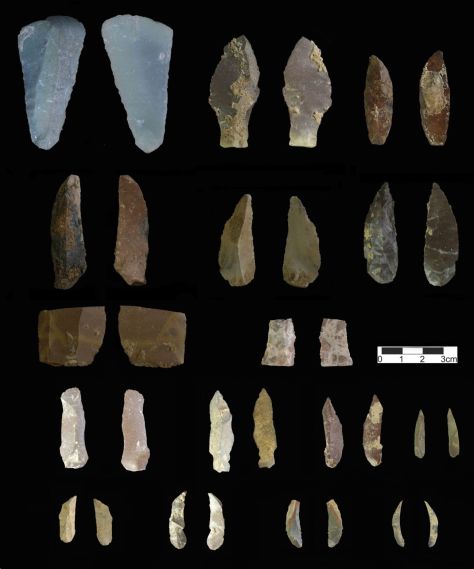NewsNext Previous
An International team lead by IPHES discovered some of the earliest cultural evidences from modern humans out of Africa
These consist of a set of stone tools, dated up to 54,000 years, found in Kaldar Cave, Iran. This discovery has been recently published in Scientific Reports, one of the top-ten multidisciplinary science journals.
català – español – photos – paper
The recent research and archaeological excavation at Kaldar Cave (Iran), conducted by an Iranian and Spanish team and led by Behrouz Bazgir and Andreu Ollé, both from IPHES (Institut Català de Paleoecologia Humana i Evolució Social) have led to the identification of the first cultural evidences outside Africa attributed to Anatomically Modern Humans (AMH’s). The discovery consists of stone tools associated with faunal remains, recovered in a layer dated by Carbon 14 between 36,000 and 54,000 years ago. This discovery has been recently published in Scientific Reports, one of the top-ten multidisciplinary science journals.
Dating results of this archaeological site put Iran among the first birthplaces of modern humans that, along with Levantine hominin groups, for the first time managed to disperse from western Asia into Europe. In this way, Kaldar Cave strengthens Iran’s position in the world Palaeolithic archaeology.
 Blades, bladelets and retouched pieces from layer 4 at Kaldar Cave – IPHES/B.Bazguir)
Blades, bladelets and retouched pieces from layer 4 at Kaldar Cave – IPHES/B.Bazguir)
Furthermore, the newly excavated sequence in Kaldar contains older levels with Mousterian industry, usually associated with Neanderthals. This provides evidence for its replacing by Baradostian industry, similar to the Aurignacian, which is unique to anatomically modern humans. Thus, this represents a unique opportunity to study the Middle to Upper Palaeolithic transition at the Zagros Mountains.
Kaldar Cave provides one of the oldest examples of modern human presence in this part of the world, and offers information on how these populations coped with the Palearctic climatic and environmental situations which were new to them.
19 international scientists have collaborated as co-authors in the article presenting these results. Among them, there are eminent specialists as Eudald Carbonell (IPHES and Universitat Rovira i Virgili, Spain), Jan van der Made (Museo Nacional de Ciencias Naturales, Madrid, Spain), Marcel Otte (University of Liège, Belgium) and Thomas Higham (University of Oxford, UK).The research counts also with Faranak Bahrololomi and Moloudsadat Azimi, collaborators from Research Center of Iranian Cultural Heritage, Handicrafts and Tourism Organization (RICHT), in the framework of an ongoing collaboration agreement signed with IPHES.
Reference:
Bazgir, B., Ollé, A., Tumung, L., Becerra-Valdivia, L., Douka, K., Higham, T.F.G., Made, J.v.d., Picin, A., Saladié, P., López-García, J.M., Blain, H.-A., Allué, E., Fernández-García, M., Rey-Rodríguez, I., Arceredillo, D., Bahrololoumi, F., Azimi, M., Otte, M., Carbonell, E., 2017. “Understanding the emergence of modern humans and the disappearance of Neanderthals: Insights from Kaldar Cave (Khorramabad Valley, Western Iran)“, Scientific Reports 7, 43460. doi: 10.1038/srep43460.


